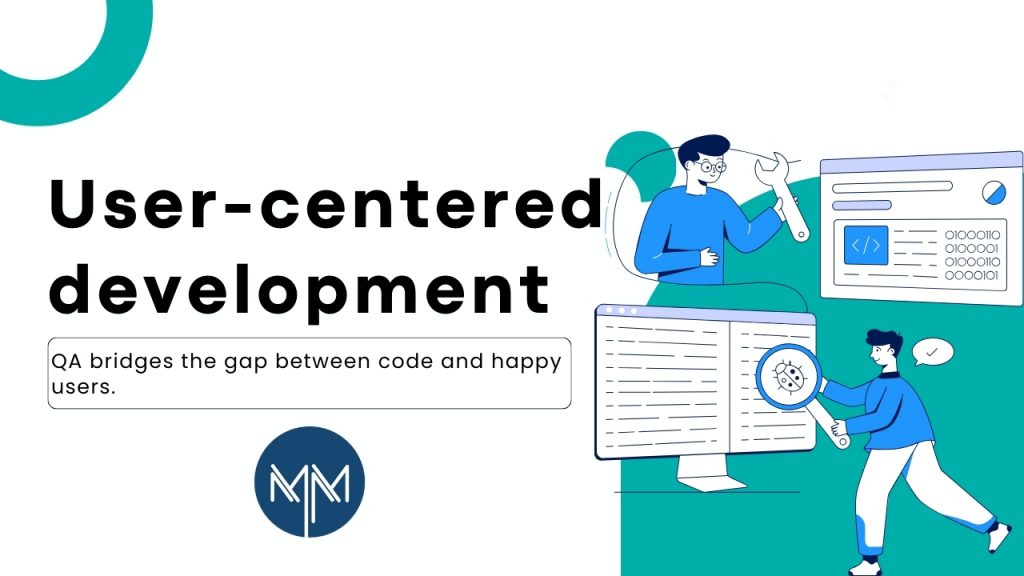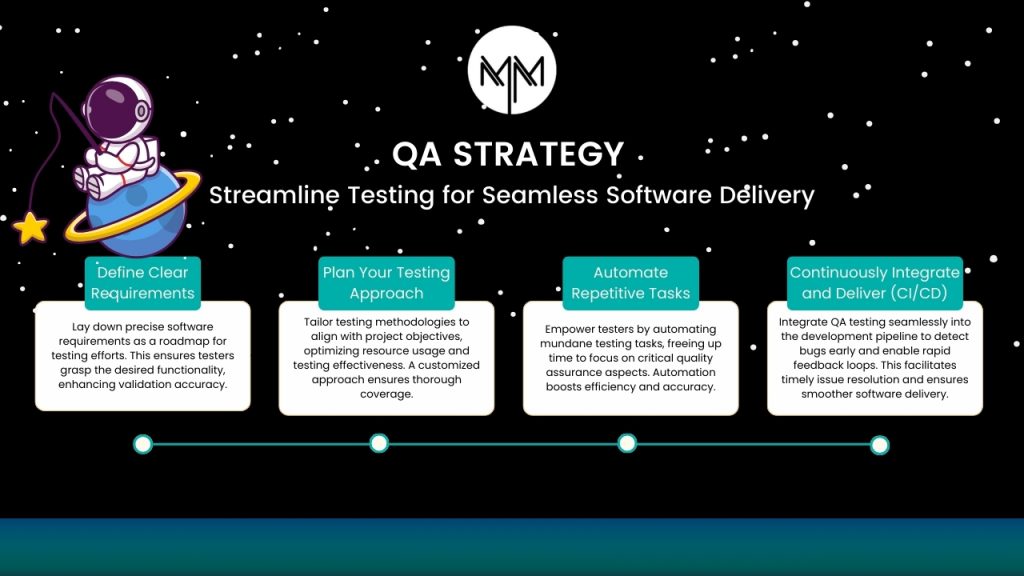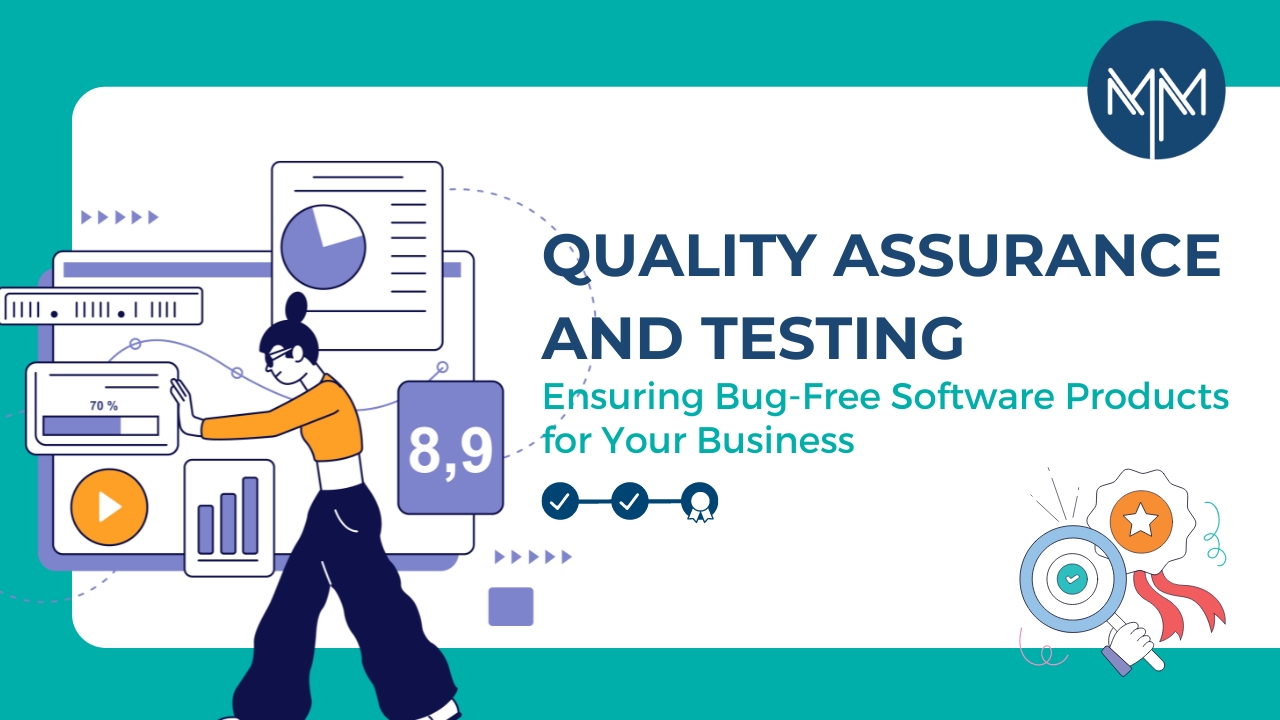Every development team aspires to provide software that is devoid of errors. However, due to the inherent complexity, interoperability, security, and functionality requirements, bugs are almost unavoidable, necessitating rigorous QA and testing to ensure the highest possible software quality.
Bug hunting extends beyond development, often discovered by users and developers post-publishing. Thus effective bug management, prioritization, and triage are crucial. Organized approaches ensure timely resolution, enhancing product quality and user satisfaction throughout the software lifecycle.
But how do you ensure your software is bug-free, meets user needs, and delivers a positive experience?
The answer lies in a robust Quality Assurance (QA) and testing strategy.
Understanding the importance of Quality Assurance and Testing:
Do you know that the market for software testing is predicted to expand by over 6%?
QA encompasses a broad range of activities that focus on improving the overall software development process. It’s not just about finding bugs; it’s about preventing them from occurring in the first place.
Additionally, several studies have revealed that a company’s annual IT budget usually includes 23% for quality assurance and testing. Therefore, it indicates the growing importance of QA among organizations.
When developing software, ensuring its viability for users is paramount. If you fail to do so it will jeopardize its success. Prioritizing user needs and feedback is essential for delivering valuable, user-centric solutions.

Therefore, the utmost priority is implementing a strong QA strategy. It will also benefit you in certain ways:
- Reduce development costs: Early detection of issues is significantly cheaper than fixing them later in the development cycle.
- Enhance user experience: QA ensures your software is intuitive, user-friendly, and meets user expectations.
- Improve software performance: QA helps identify and rectify performance bottlenecks, leading to a faster, more efficient product.
- Boost customer satisfaction: Bug-free, reliable software translates to happy customers who are more likely to recommend your product.
Encountered a Bug? Here’s How to Get it Fixed
Finding bugs in your software is an inevitable aspect of the development process, whether it’s a software crash, an invalid workflow a data connectivity mistake, or everything in between. At times, overcoming a bug can become overwhelming.
How your team handles a software fault can distinguish it from competitors and maintain a positive, productive attitude. Swift, transparent communication, proactive problem-solving, and a commitment to continuous improvement are key. Embracing challenges as opportunities for growth reinforces the team’s resilience and fosters client trust.
The QA process involves systematically evaluating the software to uncover defects and ensure it functions as intended. There are various testing methodologies, each with its focus:
- Functional Testing: It ensures that the core features of the software align with specified requirements, validating its functionality and verifying that it behaves as expected in various scenarios, ensuring a robust and reliable user experience.
- Usability Testing: It evaluates the software’s user interface and overall user experience, assessing how intuitive and user-friendly it is for the target audience. This testing helps identify usability issues and areas for improvement, ultimately enhancing user satisfaction and adoption.
- Performance Testing: It assesses the software’s speed, responsiveness, stability, and scalability under different load conditions. By simulating real-world usage scenarios, performance testing identifies bottlenecks, latency issues, and resource constraints, ensuring optimal performance even during peak usage periods.
- Security Testing: It focuses on identifying vulnerabilities within the software that could potentially compromise data integrity, user privacy, or system security. By proactively identifying and addressing security flaws, this testing helps protect against cyber threats and ensures the safety of sensitive information.
- Automated Testing: Software tests are carried out using tools and scripts in automated testing. Regression testing is one of the time-consuming, repetitive processes that best suits this approach. Automated tests can run in the background, giving developers greater time to work on more difficult tasks while still receiving prompt feedback.
- Manual Testing: When testing manually, test cases are carried out by human testers without the use of automated tools. This approach is crucial for ad hoc, exploratory, and usability testing when human insight and intuition are priceless. Manual testing is done to scan for issues in the user interface and general experience.
Building a Winning QA Strategy
Here are some key steps to building a successful QA strategy:
- Define clear requirements: You can thoroughly document software requirements to serve as a blueprint for testing efforts, ensuring that testers understand the desired functionality and can validate it effectively.
- Plan your testing approach: Customized testing methodologies to suit the unique characteristics and objectives of your project, optimizing resource allocation and testing effectiveness.
- Automate repetitive tasks: As a tester, you can concentrate on more important facets of software quality assurance when they use automation solutions to streamline repetitive testing tasks and increase efficiency.
- Continuously integrate and deliver (CI/CD): Implementing QA testing into the development process enables early bug detection and rapid feedback loops, facilitating timely resolution and ensuring smoother software delivery.

Investing in Quality Pays Off
We at Matrix Media Solutions, believe that by implementing a QA and testing strategy, you can significantly improve the quality and reliability of your software. Remember, investing in quality upfront is far more cost-effective than fixing problems after launch.
Conclusion
Ensuring bug-free software products is a multi-faceted endeavor that requires meticulous planning, execution, and continuous improvement. You can also produce high-quality software that satisfies user expectations, complies with legal requirements, and upholds the company’s reputation by adopting thorough QA and testing procedures.
In addition to improving user experience, investing in quality assurance and testing helps ensure the long-term viability and profitability of the company.
Ready to take your software development process to the next level?
You can consider a partnership with us, for a truly optimized software development process. At Matrix Media Solutions, our team of highly qualified QA specialists can collaborate with you to develop a customized testing strategy specified to your unique project needs.
This will ensure your software undergoes rigorous quality assurance, resulting in a robust, user-friendly product that delivers exceptional value for your business.


 June 21, 2024
June 21, 2024

